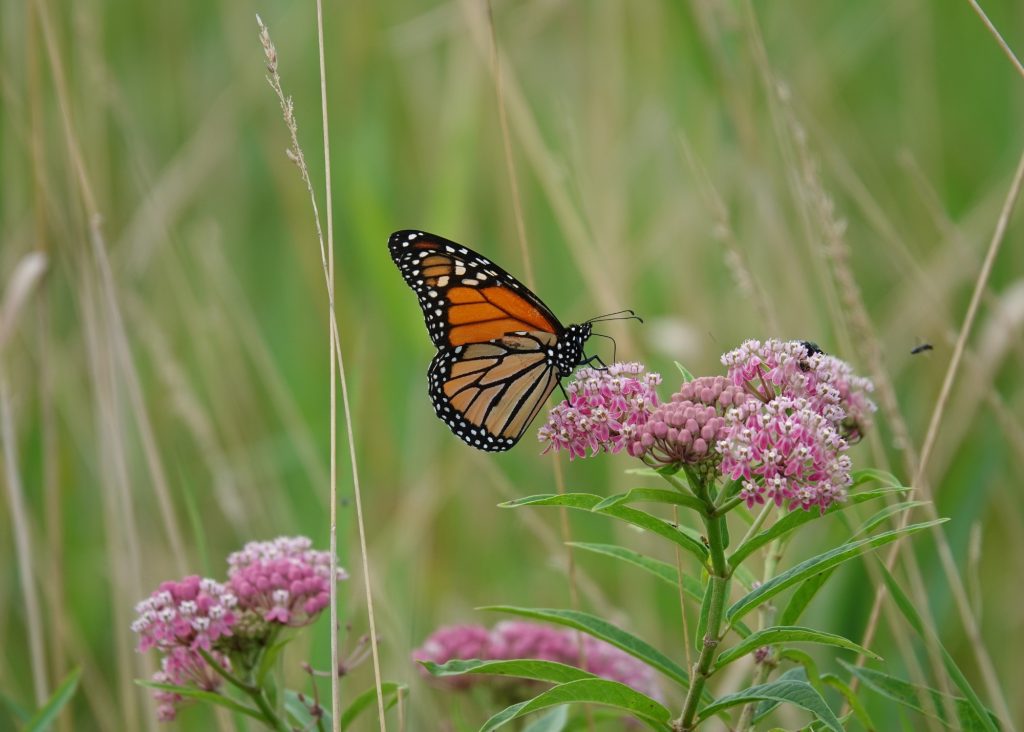(Published in Birds and Blooms)
It might be considered a noxious weed, but to me it’s a precious perennial
There’s a noxious weed in my garden. And it’s staying put. At least if I can help it.
Last summer, a common milkweed plant unexpectedly made a home beside my row of hostas, and inside my heart. I grew protective of the weed immediately after I recognized its broad, oval leaves, and of course, its succulent, honey-scented, pinkish flowers. I warned my husband, and other garden-tending family members that they better not mess with my milkweed.
“Why not?” They asked, glaring defiantly at its tall leafy spine.
“Because it’ll attract Monarch butterflies,” I replied.
Sure enough, it wasn’t long before I spied four Monarch caterpillars inching their way across the plant’s broad, milk-filled leaves.
“What did I tell you?” I gloated, showing everyone the vibrant, striped eating machines as if they were something I had created with my very own hands.
Then, something even more magical happened; the wee, wormy creatures sprouted wings.
“Look! There are monarchs on my milkweed!” I shouted, grinning from ear to ear.
(Adult female monarchs lay their eggs on the underside of milkweed leaves. Once the eggs hatch, Monarch caterpillars hang out on the plant because it is their sole source of food. Interestingly, when Monarch larvae ingest milkweed, they also ingest the plants’ toxins, called cardiac glycosides, making them toxic to predators.)
Not only does my dear milkweed plant attract butterflies, it lets me wax nostalgic. It brings me back to those lazy days of my childhood, where open fields and meadows were my playground, and weeds and wildflowers were for the plucking. Perhaps you also remember ripping apart the pale green seedpods of the milkweed plant, to get at the fish-scale seeds and silky floss on the inside?
Not only is the floss great fun to scatter in the breeze, it has quite a history. I recall my dad telling me stories about how he and his classmates would scour the fields for seedpods, filling onion sacks full of them, so that the floss could be used as fill for life jackets during World War II. (The downy floss has also been used as stuffing for dolls, pillows and comforters.)
It seems I’m not the only one gaga about this plucky perennial. I found a whole bunch of gardeners on the ‘net extolling the virtues of this unsung hero.
Mary in Michigan writes:
I love milkweed! … The flowers smell great, various parts are edible, it attracts and sustains butterflies … what more could one want?
Andrea in MN writes:
I’m also a fan of Milkweed. My rule is once the Monarchs start to lay eggs…any remaining milkweed stays where it is. I probably let about 100 plants go to seed every year and I think it is an attractive plant. It just needs a new and more flattering name.
Despite its many fans, the Ontario government considers common milkweed ‘a noxious weed’ (it’s also classified as a noxious weed in Manitoba, Quebec and Minnesota) because it has an impact on agricultural production.
Interesting, given the fact that the Ontario government deems the Monarch butterfly, a creature that depends on milkweed for its survival, ‘a species at risk.’ Am I breaking the law by allowing milkweed to flourish in my garden?
Mike Cowbrough, Weed Management Lead for the Ontario Ministry of Agriculture and Food says the reason milkweed is on the ‘noxious’ list is that it is toxic to livestock, and it can affect seed quality because it produces a sticky, milky juice than can stain crops such as soybeans. But as long as the plant is far enough away from agricultural land, it can stay put.
Whew.
Immediately after I found out my garden milkweed was legal, I headed out to check out the latest blooms on my cherished plant. As I brought one of the sweet swelling clusters to my nose, an orange streak flickered across my field of vision. A monarch.
Delicately, she came to rest on a fresh pink cushion of tiny petals.
With her wings gently opening and closing, she looked over at me, and I swear I saw her crack a smile.
